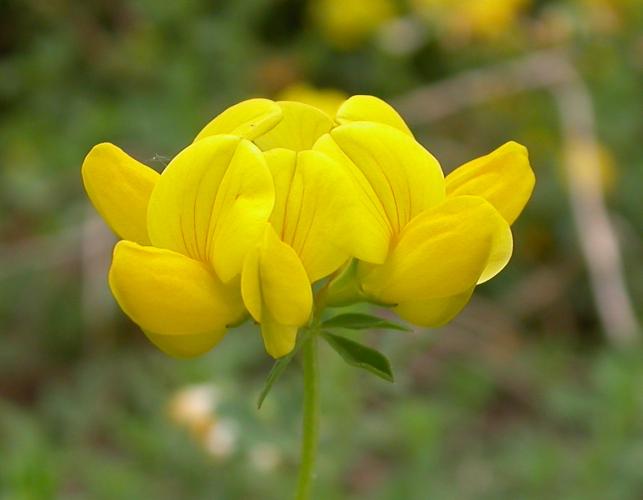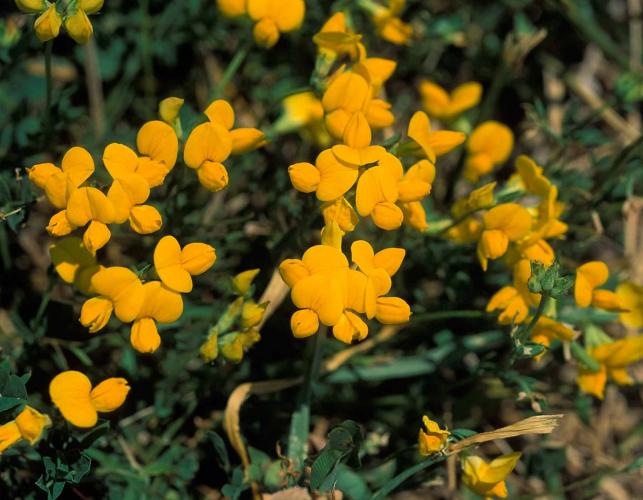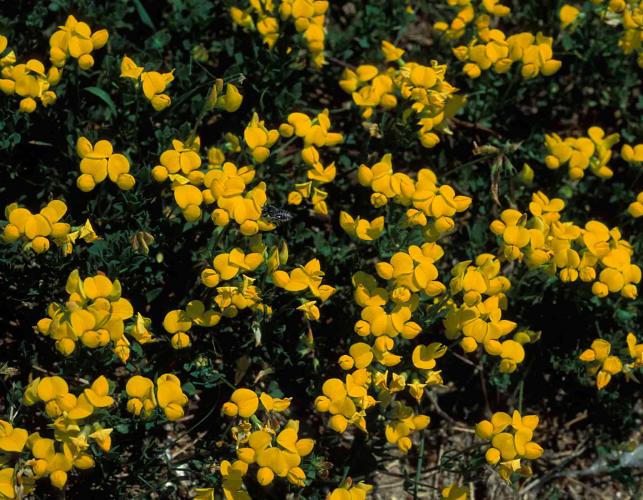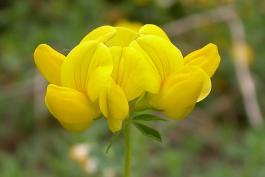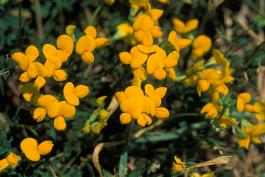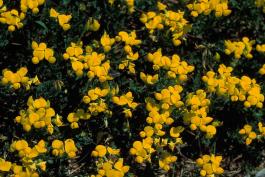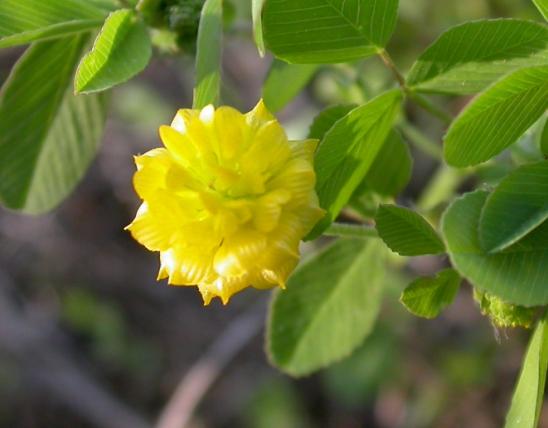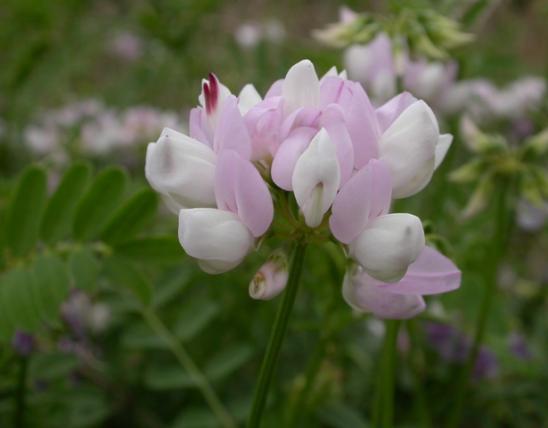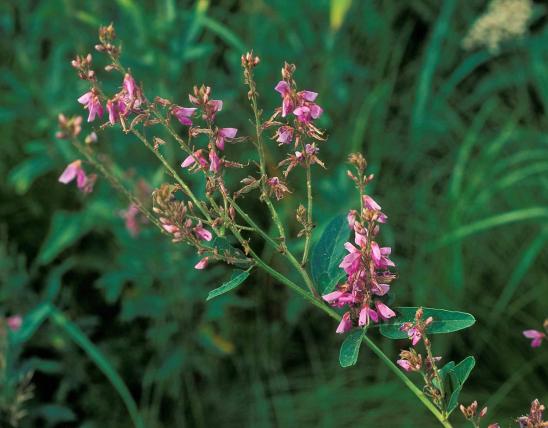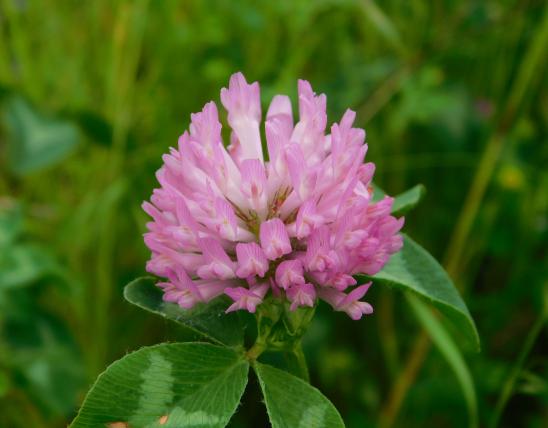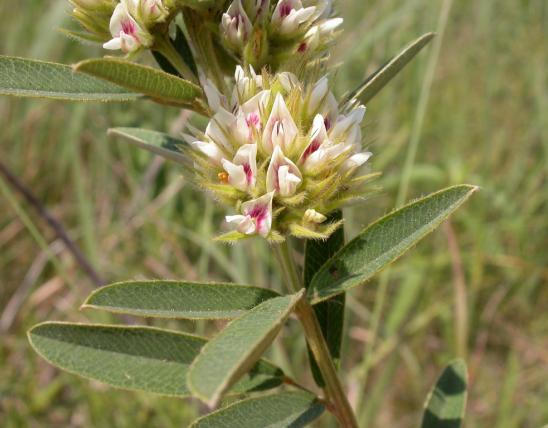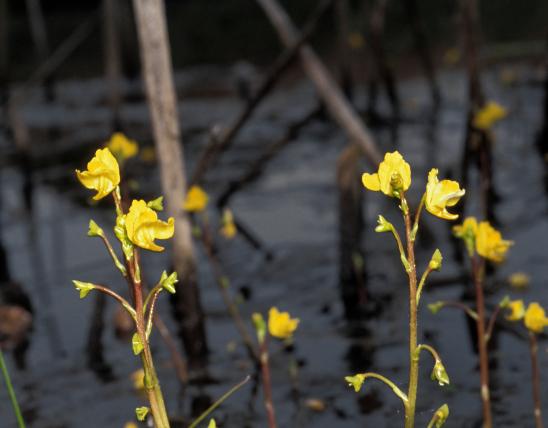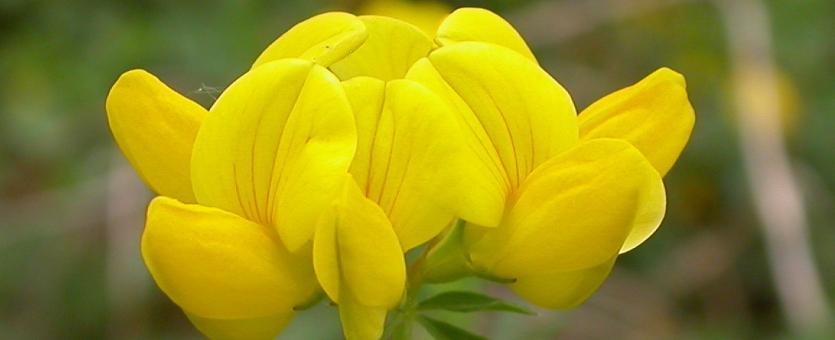
Bird’s-foot trefoil is a many-branched perennial; the branches lie on the ground, but their ends ascend. The flowers are in umbels, terminal, with the typical configuration of pea flowers, bright golden yellow. Blooms May–September. The leaves are compound, with 3 leaflets (a terminal and 2 opposite) some distance below. Two basal leaves are actually stipules, not technically part of the compound leaf, but added to the true leaflets it looks like there are 5 total leaflets. All are variably oblong. Fruits are beaked, slender, upright pods bearing 5-14 seeds.
Stem length: 6-24 inches.
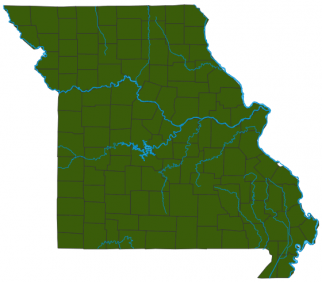
Scattered statewide, especially in the northern part of the state.
Habitat and Conservation
Fields, roadsides, waste places, and other disturbed areas. Now recognized as an invasive species in Missouri. Especially in the northern half of the state, there is a high abundance of escaped populations and the species' range is expanding markedly, resulting in environmental degradation.
A native of Europe, it was spread widely in our state by the Missouri Department of Transportation to prevent erosion at highway construction sites. This species has a worldwide distribution; it is planted widely as a low-growing groundcover.
Status
Invasive: an aggressive, nonnative species whose presence causes or is likely to cause economic harm or environmental harm.
Human Connections
Worldwide and in Missouri, this plant has been introduced as a forage and cover crop and for soil stabilization. As a legume, it introduces nitrogen into the soil, so farmers have planted it to improve soil fertility.
Ecosystem Connections
Many nonnative plants have been introduced to our country in efforts to prevent erosion, and this is one of them. As with several other nonnative plants that originally seemed to be well-behaved, this species has turned out to be invasive, infesting and devastating natural ecosystems.
